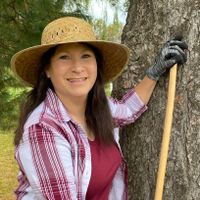Japanese Vegetable Gardening: Growing Japanese Vegetables In The Garden


Do you enjoy authentic Japanese cuisine but have difficulty finding fresh ingredients to make your favorite dishes at home? Japanese vegetable gardening might be the solution. After all, many vegetables from Japan are similar to varieties grown here and in other parts of the world. Additionally, most Japanese vegetable plants are easy to grow and do well in a variety of climates. Let's see if growing Japanese vegetables is right for you!
Japanese Vegetable Gardening
Similarity in climate is the main reason growing Japanese vegetables in the United States is easy. This island nation has four distinct seasons with a majority of Japan experiencing a humid subtropical climate similar to the southeastern and south-central states of the U.S. Many vegetables from Japan thrive in our climate and those that don't can often be grown as container plants.
Leafy greens and root vegetables are popular ingredients in Japanese cooking. These plants are generally easy to grow and are a good place to start when growing Japanese vegetables. Adding Japanese varieties of commonly grown veggies is another method for incorporating these vegetable plants into the garden.
Challenge your gardening skills by growing Japanese vegetable plants which you may not have experience cultivating. These include culinary staples such as ginger, gobo, or lotus root.
Popular Japanese Vegetable Plants
Try growing these vegetables from Japan which are often key ingredients in culinary dishes from this country:
- Aubergines (Japanese eggplants are a thinner, less bitter variety)
- Daikon (Giant white radish eaten raw or cooked, sprouts are also popular)
- Edamame (Soybean)
- Ginger (Harvest roots in fall or winter)
- Gobo (Burdock root is difficult to harvest; it provides the crunchy texture often found in Japanese cooking)
- Goya (Bitter melon)
- Hakusai (Chinese cabbage)
- Horenso (Spinach)
- Jagaimo (Potato)
- Kabocha (Japanese pumpkin with a sweet, dense flavor)
- Kabu (Turnip with snow white interior, harvest when small)
- Komatsuna (Sweet tasting, spinach like green)
- Kyuri (Japanese cucumbers are thinner with a tender skin)
- Mitsuba (Japanese parsley)
- Mizuna (Japanese mustard used in soups and salads)
- Negi (Also known as Welsh onion, sweeter flavor than leeks)
- Ninjin (Types of carrots grown in Japan tend to be thicker than U.S. varieties)
- Okuro (Okra)
- Piman (Similar to a bell pepper, but smaller with a thinner skin)
- Renkon (Lotus root)
- Satsumaimo (Sweet potato)
- Satoimo (Taro root)
- Shiitake mushroom
- Shishito (Japanese chili pepper, some varieties are sweet while others are spicy)
- Shiso (Leafy Japanese herb with a distinctive flavor)
- Shungiku (An edible variety of chrysanthemum leaf)
- Soramame (Broad beans)
- Takenoko (Bamboo shoots are harvested just before emerging from the soil)
- Tamanegi (Onion)
Sign up for the Gardening Know How newsletter today and receive a free copy of our e-book "How to Grow Delicious Tomatoes".

Laura Miller has been gardening all her life. Holding a degree in Biology, Nutrition, and Agriculture, Laura's area of expertise is vegetables, herbs, and all things edible. She lives in Ohio.